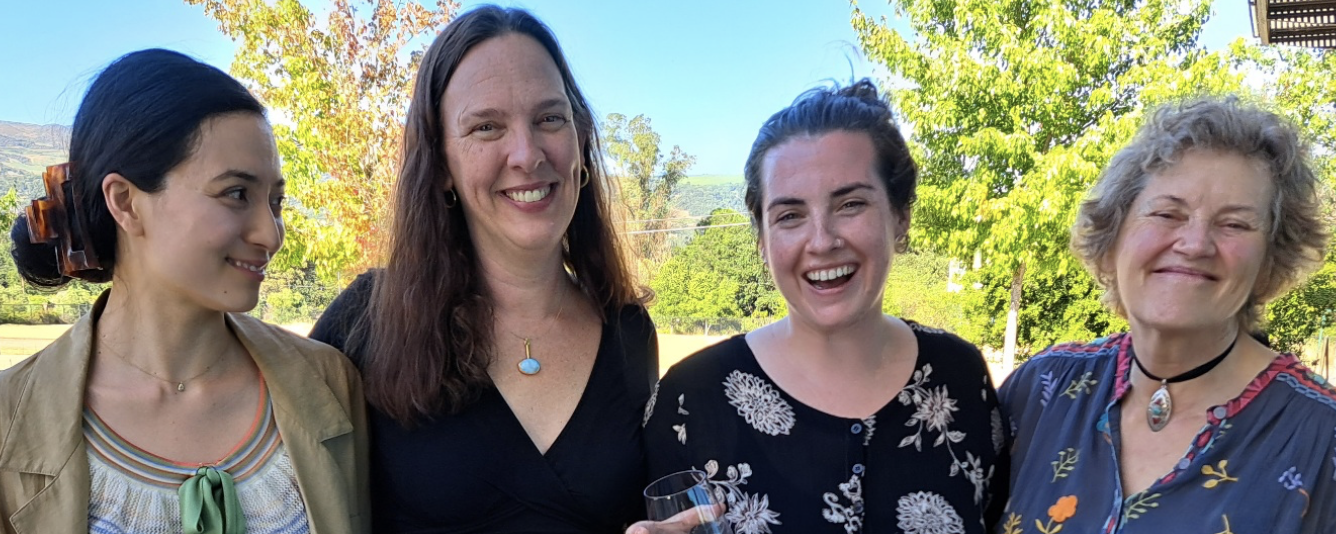|
Chamber
FAMILIAR AND NEW - TRIO NAVARRO'S SPRING CONCERT IN WEILL
by Terry McNeill
Sunday, April 21, 2024
Symphony
MONUMENTAL MAHLER 5TH IN SO CO PHIL'S SEASON ENDING CONCERT
by Terry McNeill
Sunday, April 14, 2024
Chamber
OAKMONT SEASON CLOSES WITH STRAUSS' PASSIONATE SONATA
by Terry McNeill
Thursday, April 11, 2024
Chamber
MORE GOLD THAN KORN AT ALEXANDER SQ CONCERT
by Terry McNeill
Sunday, April 7, 2024
Choral and Vocal
VIBRANT GOOD FRIDAY REQUIEM AT CHURCH OF THE ROSES
by Pamela Hicks Gailey
Friday, March 29, 2024
TWO OLD, TWO NEW AT THE SR SYMPHONY'S MARCH CONCERT IN WEILL
by Peter Lert
Saturday, March 23, 2024
Chamber
NOT A SEVENTH BUT A FIRST AT SPRING LAKE VILLAGE CONCERT
by Terry McNeill
Wednesday, March 20, 2024
THIRTY-THREE PLUS VARIATIONS AND AN OCEAN VIEW
by Terry McNeill
Saturday, March 16, 2024
Choral and Vocal
A ST. JOHN PASSION FOR THE AGES
by Abby Wasserman
Friday, March 8, 2024
Choral and Vocal
SPLENDID SCHUBERT SONGS IN SANET ALLEN RECITAL
by Terry McNeill
Saturday, March 2, 2024
|
 |
 l to r: A. Vardanega E. Reed R. Lipchik E. Blumenstock |
VOM PLAYERS STRIP DOWN A SYMPHONY
by Abby Wasserman
Saturday, July 15, 2023
From its beginning nine years ago, Valley of the Moon Music Festival has presented treasures from the Classical to early Romantic periods to educate and delight their audiences. Every year they bring together seasoned professionals and five talented apprentices specializing in performance on original instruments; in this July 15 concert, that meant gut strings on the violin, viola and cello, and a replica of a fortepiano from the early 18th century, the instrument Mozart knew.
The first half featured an enchanting performance of Mozart’s G Minor Piano Quartet, K. 478, performed by pianist Audrey Vardanega, violinist Ravenna Lipchik, Elizabeth Blumenstock on viola, and cellist Elisabeth Reed. Ms. Vardanega introduced the piece with an illustration of the difference in sound between the fortepiano and a modern piano. In the wings, Eric Zivian played an excerpt from the Quartet on a modern grand, and Ms. Vardanega played the same phrase on the fortepiano, revealing a quite other sound—lighter and sweeter. She said that the first time she played a fortepiano it felt like a toy piano, but as she continued to explore, she discovered a world of sound and articulation that have informed the way she plays the modern piano. With that, the players settled into the Mozart.
The ensemble playing by the four was inspired, communicating beauty, passion and joy. Each movement conjured a different image: there were plaintive rising voices toward the end of the first movement; the second movement was like a starry sky; and at moments in the third, the bass notes of the fortepiano and cello evoked two growling bears. What a treat to hear the venerable Ms. Blumenstock on viola in lovely deep-throated passages; she told me later that she began on viola as a teenager but changed to violin because there was so much more violin repertoire. With her viola part, Ms. Vardanega’s piano, Ms. Lipchik’s lyrical violin and Ms. Reed’s deep-voiced cello, the performance was radiant—a convincing musical conversation.
After intermission, during which few ventured outside in the 98-degree heat, preferring to linger in the air-conditioned Hanna Center hall, a piano trio transcription was heard of Beethoven’s Symphony No. 2 in D Major, Op. 36. This was the reason for the program’s title, “The Symphony as a Trio.”
Tanya Tomkins, cello, Eric Zivian, fortepiano, and violinist Keir GoGwilt created the richness and complex colors of the 1802 symphony, arranged in 1805 in a radical transformation for piano trio. Asking myself why this arrangement was undertaken, I wondered if it was because at its premiere in 1803 the symphony had garnered mixed reviews. A Viennese critic wrote it was "a hideously writhing, wounded dragon that refuses to die, but writhing in its last agonies and, in the fourth movement, bleeding to death.” Perhaps Beethoven figured a trio could extend its life and also would cost a lot less than convening an orchestra. Be that as it may, the arrangement for trio is attributed to Beethoven in the score, but in other places the credit is given to Ferdinand Ries, Beethoven’s student. Of course, Beethoven would have had to approve, but many scholars lean towards Ries as the arranger.
Beethoven’s Symphony #2 is scored for strings, timpani, and pairs of flutes, oboes, clarinets, bassoons, horns and trumpets. Mr. Zivian, Ms. Tomkins and Mr. GoGwalt studied the original score to see where they should imitate the voices of those instruments. Generally, the fortepiano took on bassoon, oboe and clarinet, while the violin and cello summoned flute, timpani, horn and trumpet.
The result was a remarkably full orchestral sound—personal, visceral, percussive and passionate. Compressed and stripped to the essentials, the arrangement revealed the bones and flesh of the symphony’s lyricism, inside jokes, and what Emanuel Ax calls Beethoven’s “controlled mania.”
The fragility of period instruments was demonstrated when following the first movement, Mr. Zivian paused to re-tune the fortepiano. His exquisite phrasing, Ms. Tomkins’ driving rhythms (she stamped her foot at one emphatic point), and Mr. GoGwilt’s elegant bow control combined to create a magical performance.
The audience rose at the completion for an enthusiastic ovation and then joined the musicians on the shaded patio for a reception. In all ways, this opener to VOMMF’s ninth season was a resounding success.
|

